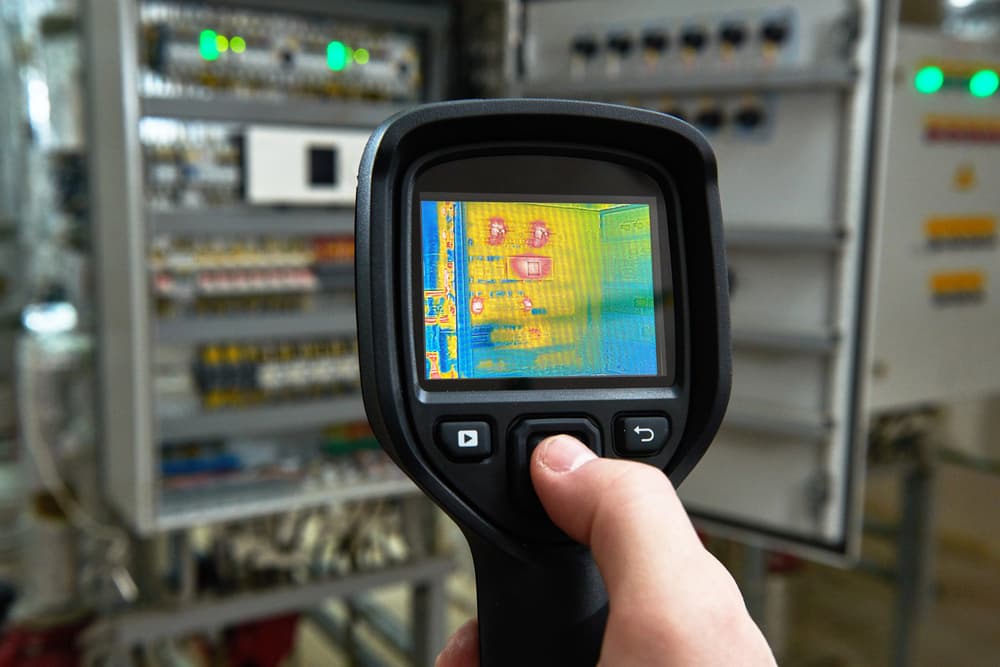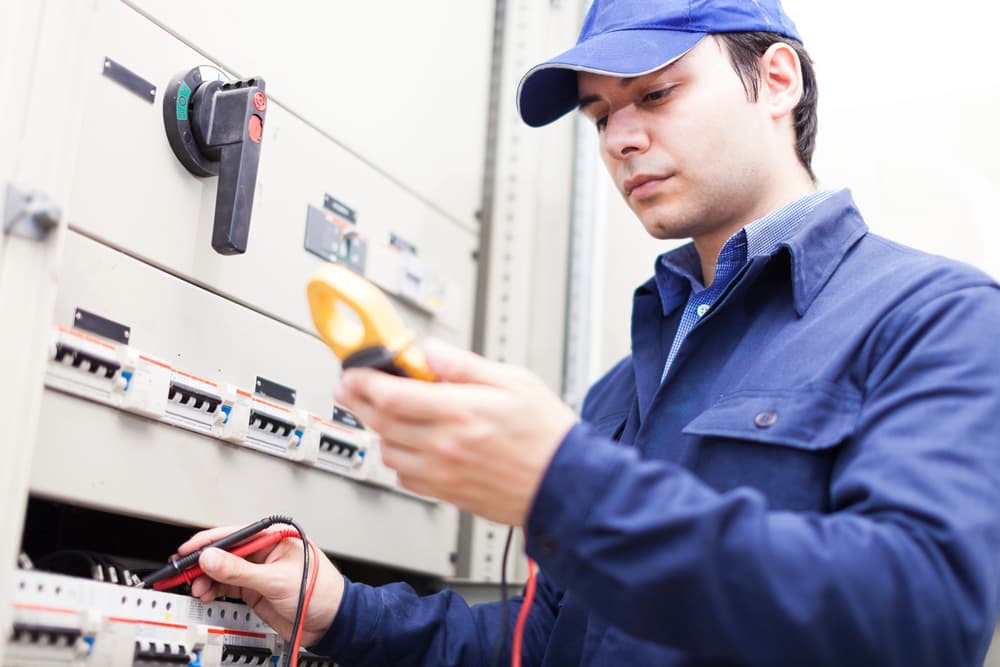Electricians diagnose and repair electrical faults using a systematic, safety-first approach that involves visual inspections, data collection, and specialised testing equipment.
A proper repair not only fixes the issue but also ensures your system meets safety standards. Licensed electricians in Australia employ a detailed process, putting safety and rules first.
Electrical issues or faults are no small matter, after all. They can lead to electrical shocks, fires, or costly damage in homes and businesses. That’s why electricians rely on careful observation, diagnostic tools, and systematic testing to find the root cause before making repairs.
Keep reading to see how this process works step by step.
Step 1: Diagnose the Problem
When an electrical fault shows up, the first step is a careful diagnosis.
In Australia, licensed electricians use a structured, safety-first process to assess the problem before attempting any repairs. This systematic approach minimises risks and ensures they resolve the issue correctly on the first attempt.
Here’s what the process usually looks like:
1. Gather initial information
The electrician will ask you about the issue. Key questions include:
- When did the fault first appear?
- What symptoms did you notice (flickering lights, burning smell, breaker tripping)?
- Were any new appliances or devices added recently?
They’ll also inspect the main electrical panel for tripped breakers or blown fuses. A tripped breaker can be reset by turning it off and then back on, which may restore power to the affected circuit.
2. Conduct a visual inspection
Next comes a careful look at the de-energised circuit. The electrician checks for:
- Burn marks, discolouration, or melted insulation
- Frayed, cracked, or exposed wires
- Loose, corroded, or poorly connected terminals
- Persistent burning smells near outlets or switches
In more complex cases, thermal imaging cameras can detect hot spots that signal overloaded circuits or failing equipment.
3. Perform diagnostic tests
Electricians then rely on specialised tools and fault-finding techniques to confirm what they’ve observed. Here are some examples:
- Multimeter tests measure voltage, current, and resistance.
- Continuity and insulation resistance tests detect breaks or leakage in wiring.
- Technicians test and reset GFCIs in kitchens, bathrooms, or outdoor areas.
- A “divide and conquer” approach can isolate the faulty section of a circuit or identify a problem appliance.

Step 2: Fix the Electrical Fault
The electrician begins repairs after finding the problem. The goal is not only to restore power but also to ensure that the system remains safe in the long term.
In this step, the electrician usually:
1. Repair or replace faulty components
- Tighten loose wiring connections at outlets or switches.
- Replace damaged or corroded wires to reduce the risk of overheating or fire.
- Install new switches, outlets, or fixtures if the existing ones are faulty or burned out.
2. Address root causes
- Correct overloaded circuits by moving appliances or adding a dedicated circuit.
- Upgrade old or unsafe wiring systems in older homes to meet current standards.
- Installation of modern safety devices, like Ground Fault Circuit Interrupters (GFCI) or Arc-Fault Circuit Interrupters (AFCI), for extra protection against electrical fires or shocks.
To give you a clearer picture, here are some common faults electricians encounter, their causes, and solutions:
| Fault | Cause | Electrical Solution or Advice |
| Tripping circuit breaker | Overloaded circuit, short circuit, or ground fault | Reduce load; repair/replace faulty wiring, devices, or electrical appliances |
| Flickering or dimming lights | Loose wiring, faulty light fitting, or neutral connection issue | Tighten connections, replace fitting, repair neutral wire |
| Dead outlet or switch | Loose/corroded wiring, tripped breaker, or damaged component | Check breaker, inspect wiring, repair or replace as needed |
| Burning smell or scorch marks | Overheating from loose connections or degraded wiring | Isolate power, replace burnt wires/components, tighten connections |
Step 3: Perform a Post-Repair Verification
After completing the repair, an electrician conducts a post-repair check to ensure everything is safe and compliant with codes.
This step gives you peace of mind that the problem won’t return. It usually involves:
- Post-repair testing. The electrician restores power, then uses a multimeter and other tools to confirm the circuit is safe and working.
- Re-test the circuit. The electrician checks every affected outlet, switch, or appliance again to ensure smooth operation.
- Certification. For major repairs or upgrades, the electrician may provide a final inspection and compliance certificate to show the work meets Australian standards.
- Root cause analysis. The electrician explains what caused the fault to help prevent issues in the future.
- Documentation. You’ll receive a written report outlining the electrical problem, repair steps, and test results.

Keep Your Home and Business Safe
Diagnosing and fixing electrical faults isn’t guesswork. It’s a systematic process that trained electricians follow to keep your electrical system reliable.
They resolve issues at the source through comprehensive inspections, testing, and repairs instead of offering temporary fixes. Remember, regular maintenance and reporting issues early can help prevent hazards and keep your electrical system lasting longer.
Also, DIY electrical work is both dangerous and illegal in Australia, so it’s always best to call a licensed professional.
Need help today? Contact SBH Electrical on 0457 759 723 or visit our contact page.

